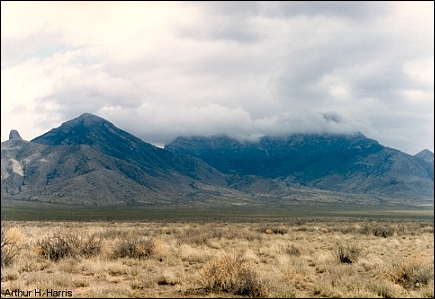

Has anyone ever told you we live in a "rain shadow"? What does that mean, anyway? Well, we get shadows when something big blocks the sun. So, we get a "rain shadow" when something big blocks the rain! Now what could do that? It's got to be something huge, and about the biggest things around are mountains! Scientists call them "orographic barriers".
Air entering our area has to come over the mountains, and in rising over them, the air expands and cools. Since cool air can't hold as much water as warm air, it drops much of its moisture as rain or snow on the mountains. This is one reason that mountain tops in the desert often are forested.
By the time the air has gotten over the mountains, most of its moisture
is gone. Thus, being in a rain shadow is a major reason that the Chihuahuan Desert is
so dry.

Listen to the Audio (mp3 format) as recorded by KTEP, Public Radio for the Southwest.
Contributor: Robert Schmidt, Department of Geology, University of Texas at El Paso.
Desert Diary is a production of KTEP, National Public Radio at the University of Texas at El Paso.

Clouds forming over the Big Hatchet Mountains of New Mexico as air is forced upward by the mountains. Photograph by Arthur H. Harris, 23 February 1985.
Riley, D., and L. Spolton. 1974. World Weather and Climate. Cambridge University Press, London, 120 pp.